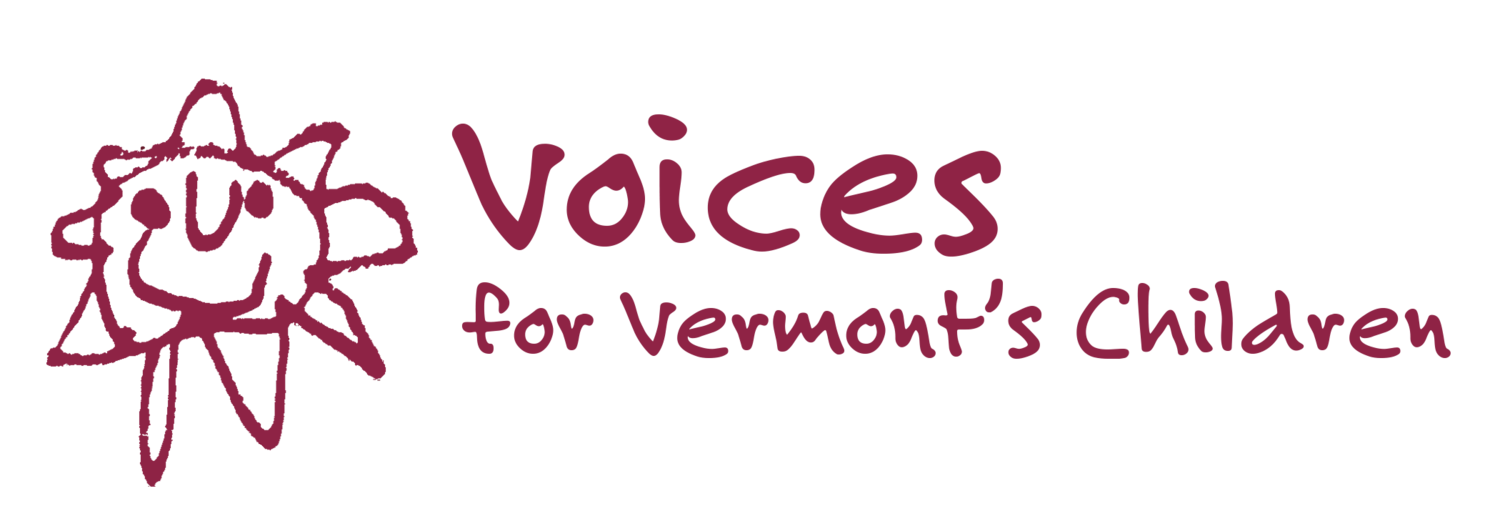Vermont Early Reading Proficiency Scores Reflect Impact of Income Inequality
Voices for Vermont’s Children is partnering with the Annie E. Casey Foundation in the release of a new KIDS COUNT® data snapshot, Early Reading Proficiency in the United States. According to the report, in 2013 58 percent of 4th grade students in Vermont were below proficient in reading as defined by the National Assessment of Educational Progress (NAEP) standards. This is an 8% improvement since 2003. However, as is true nationwide, there is a significant discrepancy between the scores of low income and higher income students, and the gap between the two is growing.
Early Reading Proficiency in the United States compares state-by-state and national reading data from the NAEP results released in 2013 with data taken from the assessment in 2003. The NAEP is administered to a sampling of schools in every state, and reports results based on this sample.
In 2013, 74 percent of low-income Vermont students had scores that were below proficient, compared to 46 percent of higher-income fourth graders.
“That’s a 28 percent difference,” says Sarah Teel, Research Associate at Voices for Vermont’s Children. “Over time, there have been improvements across both income groups, yet the overall increase in scores masks growing disparity,” says Teel. “The gap between success on this measure for lower-income and higher income kids in Vermont has increased by 33 percent since 2003.”
Vermont has a higher rate of proficiency than the national average for all groups, and a smaller gap between the scores of lower- and higher-income 4th graders. However, the gap is widening faster in Vermont than in the nation overall. The gap has grown by 33 percent in Vermont since 2003, while it has grown by 19 percent in the United States as a whole.
The Annie E. Casey Foundation has documented in Early Warning: Why Reading by the End of Third Grade Matters and Early Warning Confirmed the need to focus on reading proficiency by the end of third grade. It is an essential step toward increasing the number of children who succeed academically and do well in life. Research from the reports found that children who read proficiently by the end of third grade are more likely to graduate from high school, are less likely to fall into poverty and are more likely to find a job that can adequately support their families.
Early Reading Proficiency in the United States includes data for every state and for the nation overall. The report notes that nationwide, 80 percent of lower-income fourth graders and 66 percent of all kids are not reading proficiently. The Foundation warns that if this trend continues, the country will not have enough skilled workers for an increasingly competitive global economy by the end of this decade.
“Reading is critical for all children,” said Ralph Smith, senior vice president of the Casey Foundation and managing director of the Campaign for Grade-Level Reading. “It is unacceptable to have the gap in reading proficiency rates between low-income and high-income children increase by nearly 20 percent over the last decade. We must do more to improve reading proficiency among all kids while focusing attention on children in lower-income families who face additional hurdles of attending schools that have high concentrations of kids living in poverty.”
“The good news is that all but six states have made progress in improving reading proficiency in the last 10 years,” said Laura Speer, associate director, Policy Advocacy Reform, of the Casey Foundation. “However, more than 50 percent of kids in every state are not proficient readers by the time they enter fourth grade. New Mexico and Mississippi have the worst outcomes (79 percent) while Massachusetts has the best (53 percent).”
“All states need to do whatever it takes to get all kids ─ especially in populations that are struggling ─ on track with this milestone,” added Smith.
###
Voices for Vermont’s Children is a statewide, multi-issue, independent non-profit that promotes public policy to enhance the lives of children and youth in Vermont. For more information, visit www.voicesforvtkids.org.
The Annie E. Casey Foundation creates a brighter future for the nation’s children by developing solutions to strengthen families, build paths to economic opportunity and transform struggling communities into safer and healthier places to live, work and grow. For more information, visit www.aecf.org.
Early Reading Proficiency in the United States features the latest data for states, the District of Columbia and the nation, as does the Casey Foundation’s KIDS COUNT Data Center, which is home to comprehensive national, state and local statistics on child well-being. KIDS COUNT®is a registered trademark of the Annie E. Casey Foundation.
The Campaign for Grade-Level Reading, launched in May 2010, is a collaborative effort of funders, nonprofit partners, states and more than 140 communities across the nation to ensure that many more children from low-income families succeed in school and graduate prepared for college, a career and active citizenship.
Follow Voices for Vermont’s Children and this issue on Twitter @voices4vtkids and on Facebook https://www.facebook.com/voicesforvtkids.
Follow Annie E. Casey Foundation and this issue on Twitter @aeckidscount and on Facebook at http://www.facebook.com/KIDSCOUNT.
